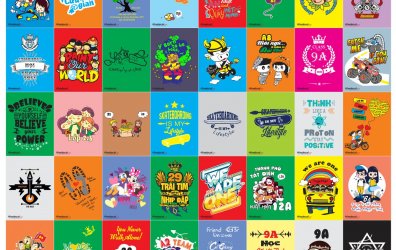V
vikram kumar
Hey everyone,
I've been messing around with business loan ads for a while now, and one thing that's been nagging me is figuring out whether my campaigns are actually doing anything. I mean, you can throw money at an ad, see some clicks, and feel like you're making progress—but are those clicks really turning into loan applications or meaningful leads? That's where I stumbled across the idea of conversion tracking, and honestly, it's been kind of a game changer.
At first, I didn't even know where to start. I kept asking myself: do I track just the form submissions, or should I go deeper into tracking every interaction? And what about users who click but don't immediately apply? It felt messy and a bit overwhelming. I knew tracking would help optimize my ads, but the setup seemed technical, and I worried I'd mess something up and get useless data.
So here's what I tried. I started small: just tracking completed loan application forms on my landing page. That alone was revealing. Suddenly, I could see which ads actually led to applications, and which ones were just eating my budget. One ad creative that I thought was brilliant? Turns out, it got clicks but almost no submissions. Another one that felt “boring”? It had a surprisingly high conversion rate. That was my first lightbulb moment: impressions and clicks don't tell the full story.
After that, I experimented a bit more with tracking. I set up a basic conversion funnel—tracking form submissions, newsletter signups, and even users who spent more than a few minutes on the application page. Each little data point gave me insights into how people were interacting with my ads. What surprised me the most was how small tweaks could make a noticeable difference. Changing the headline on an ad or shifting the form layout on the landing page sometimes doubled the conversions. It felt like finally getting a “cheat sheet” for what actually works.
I won't lie, it's not magic. You still need patience and a willingness to test things one step at a time. But conversion tracking makes testing actually useful. Before, I'd make changes based on gut feeling or assumptions. Now, I could see cold hard numbers, and it's way easier to make decisions about where to invest ad money.
If you're in the same boat, one thing that helped me was following a simple guide to set everything up correctly. It explains not just the tracking basics, but also how to interpret the data and actually act on it. If you want a straightforward reference, check out this guide: Use Conversion Tracking to Optimize Business Loan Ad . It broke things down so even someone like me, who's not a tech whiz, could get it running.
Honestly, I feel like my business loan ads finally started making sense after a few weeks of tracking. I can see which ads were underperforming, which audiences were worth targeting, and even which times of day my ads worked best. It's still an ongoing learning process, but the difference is clear: conversion tracking doesn't just measure success—it guides you to it.
Anyway, just wanted to share my experience in case anyone else is scratching their head over why their business loan ads aren't performing as expected. Start small, track the right actions, and don't be afraid to tweak based on real data. It's been a real eye-opener for me.
I've been messing around with business loan ads for a while now, and one thing that's been nagging me is figuring out whether my campaigns are actually doing anything. I mean, you can throw money at an ad, see some clicks, and feel like you're making progress—but are those clicks really turning into loan applications or meaningful leads? That's where I stumbled across the idea of conversion tracking, and honestly, it's been kind of a game changer.
At first, I didn't even know where to start. I kept asking myself: do I track just the form submissions, or should I go deeper into tracking every interaction? And what about users who click but don't immediately apply? It felt messy and a bit overwhelming. I knew tracking would help optimize my ads, but the setup seemed technical, and I worried I'd mess something up and get useless data.
So here's what I tried. I started small: just tracking completed loan application forms on my landing page. That alone was revealing. Suddenly, I could see which ads actually led to applications, and which ones were just eating my budget. One ad creative that I thought was brilliant? Turns out, it got clicks but almost no submissions. Another one that felt “boring”? It had a surprisingly high conversion rate. That was my first lightbulb moment: impressions and clicks don't tell the full story.
After that, I experimented a bit more with tracking. I set up a basic conversion funnel—tracking form submissions, newsletter signups, and even users who spent more than a few minutes on the application page. Each little data point gave me insights into how people were interacting with my ads. What surprised me the most was how small tweaks could make a noticeable difference. Changing the headline on an ad or shifting the form layout on the landing page sometimes doubled the conversions. It felt like finally getting a “cheat sheet” for what actually works.
I won't lie, it's not magic. You still need patience and a willingness to test things one step at a time. But conversion tracking makes testing actually useful. Before, I'd make changes based on gut feeling or assumptions. Now, I could see cold hard numbers, and it's way easier to make decisions about where to invest ad money.
If you're in the same boat, one thing that helped me was following a simple guide to set everything up correctly. It explains not just the tracking basics, but also how to interpret the data and actually act on it. If you want a straightforward reference, check out this guide: Use Conversion Tracking to Optimize Business Loan Ad . It broke things down so even someone like me, who's not a tech whiz, could get it running.
Honestly, I feel like my business loan ads finally started making sense after a few weeks of tracking. I can see which ads were underperforming, which audiences were worth targeting, and even which times of day my ads worked best. It's still an ongoing learning process, but the difference is clear: conversion tracking doesn't just measure success—it guides you to it.
Anyway, just wanted to share my experience in case anyone else is scratching their head over why their business loan ads aren't performing as expected. Start small, track the right actions, and don't be afraid to tweak based on real data. It's been a real eye-opener for me.




